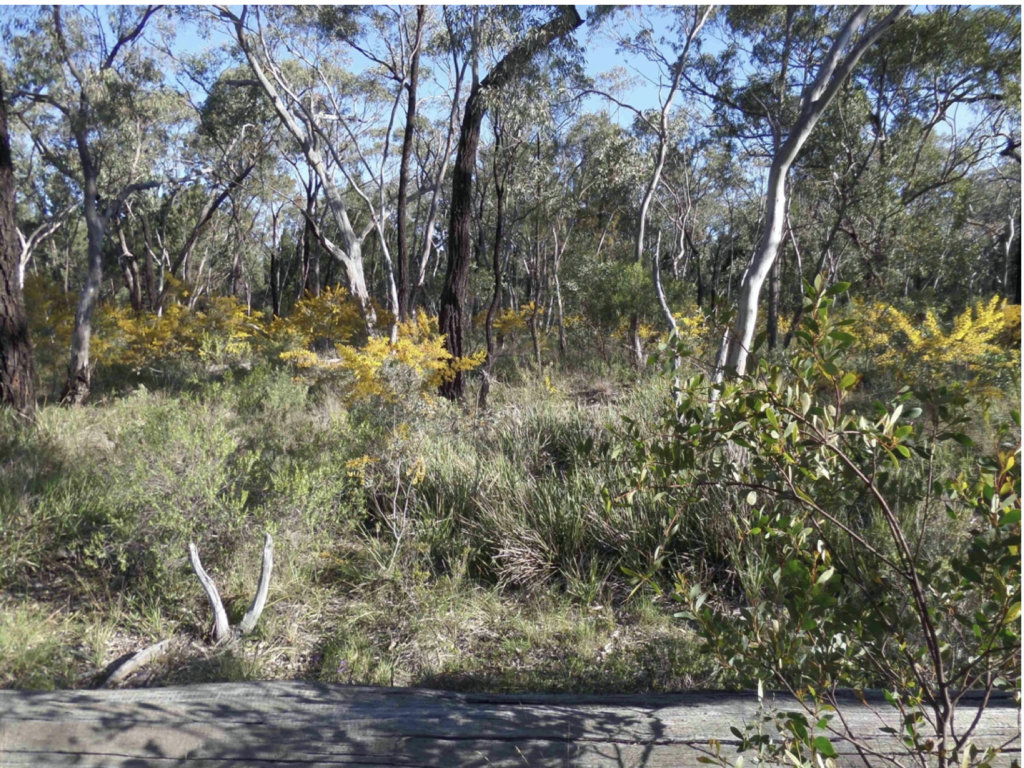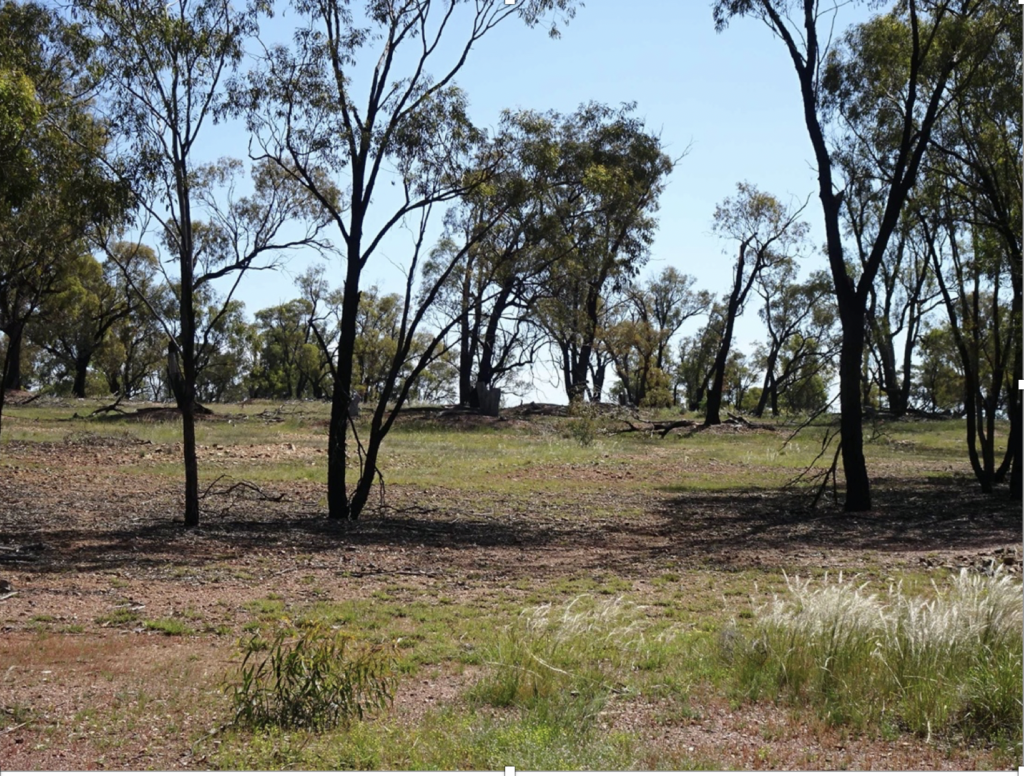
Andrew and his wife Jennifer have regenerated their two properties at Dubbo and Narromine. When Andrew and Jennifer purchased their properties, they were degraded due to livestock grazing and feral animals. After two decades of very fulfilling work they have transformed both properties, with original woodland plants regenerating and wildlife returning. To recreate the original vegetation that existed before farming they relied on the records of the early explorers on the types of vegetation they saw in their travels in the area.
While collecting native plant seed it became apparent to me that the interesting plants and highest diversity was almost always found on the roadside corridors (national estate lands being off limits). Rural properties were fine for canopy species but when it came to the understorey it was usually on the other side of the fence. This made me ask myself, “What was our ‘bush’ really like before clearing and grazing?”
Central West NSW features in several expeditions dating back to 1813. Evans, Oxley, Cunningham, Sturt and Mitchell all led multiple expeditions. Their journal accounts provide sometimes eloquent descriptions … the general appearance of the country, its surface, soil, animals, vegetables and minerals, everything that relates to the population.
Governor King’s botanist, Allan Cunningham, accompanied John Oxley on his first expedition of the Lachlan River 1817. Oxley’s 1817 expedition was unique in several ways.
- It was the first expedition into NSW central western slopes and plains, occurring only a few years after Evans discovery of the Bathurst region (1813) and the establishment of the settlement at Bathurst (1815).
- His record has two independent, day by day accounts of the journey’s observations.
- Due to flooding along the Lachlan River the expeditions ventured well south of the river system (down to Rankin Springs) and then between the Lachlan and Macquarie Rivers on the return journey (traversing country between Condobolin – Tomingley – Wellington). As such it describes substantial tracts of country well away from the rivers and alluvial plains.
What were our woodlands and sclerophyll forests like?
The following quotes from Allan Cunningham’s journal are observations of Eucalyptus sideroxylon western slopes dry sclerophyll forest from the central west (NSW South West Slopes IBRA).
August 6th. Wednesday: … Descending from a slight rise we entered a stony brush (denominated an iron bark scrub), exceedingly close and confined, in which I discovered a few new plants viz:–Dodonaea calycina, a slender twiggy shrub remarkable for its large calycinal leaves. Pultenaea sp., leaves linear-oblong, which are, with the calyx and branches, silky. Dillwynia sp., allied to D. floribunda. All the plants observed in Peel Range are likewise here, of which Acacia sp., allied to A. decipiens is very common. The timber of this scrub is Eucalyptus sideroxylon, an iron bark, cypress and a species of Eucalyptus with long lanceolate leaves, not in flower.
August 14th. Thursday: … Thickly wooded for about 5 miles, and becoming hilly as we approached the lofty range before us. On the first rising ground, which is clothed with western iron bark, I discovered a new species of Acacia impressa and a species of Leucopogon; the Acacia forming a small tree 10-12 feet high, and in young fruit and flower.
The following photograph from this area would be close to what the early explorers may have experienced. From an ecological perspective it contains many features which support woodland birds, reptiles and small mammals (i.e. the complex mosaic of multi-level ground cover, shrub and canopy layers). As such it supports many of our declining flora and fauna species.

The picture below represents mugga ironbark dry sclerophyll forest as found on surrounding farmlands. The difference in the same forest system is stark. The first has a high-level structural and floristic diversity providing diverse habitat, forage and shelter for any wildlife present. Rainfall soaks into the soil supporting vegetation growth, complex symbiotic relationships assist with nutrient cycling, in turn the diverse wildlife help manage potential pests. Essentially a balanced self-sustaining system, resilient to invasive species and external pressures making the most of the natural rainfall, sunlight and soil conditions.

The second example is a landscape which is bleeding resources. It provides habitat to only the most advantageous of our native wildlife such as the butcher and miner bird groups. Effective rainfall (i.e. rainfall which soaks in and results in plant growth) is severely compromised with clear evidence of surface and soil erosion. This erosion has compromised the fertility and structure of the soil creating a negative feedback loop exacerbating rainfall infiltration issues, further reducing plant growth potential, increasing erosion and soil compaction leading to less effective rainfall. The effective rainfall on this
site could be as low as 50% infiltration, in essence we have created semi-arid growth conditions in a temperate climate zone and in the process clogged our waterways with eroded material.
Can this site be fixed? Yes.
Would it take long? Not really, a few years if you address all the major threats effectively.
If you are interested in this topic and would like to find out more, check out the amazing resource compiled by Project Gutenberg Australia listed below;
PGA: Project Gutenberg Australia, “a treasure-trove of literature”, http://www.gutenberg.net.au/index.html. Project Gutenberg is an international, independent organisation, built by the efforts of volunteers. It is committed to providing e-books access – books, journals, stories, historic document and accounts – some never previously published or transcribed.
All books are public domain; in Australia, “treasure found hidden with no evidence of ownership”. Australian history buffs link – “Journals of Australian Land and Sea Explorers and Discoverers”:
http://www.gutenberg.net.au/explorers-journals.html
Other sources:
1 Oxley John, 1820, Journals of two expeditions into the interior of New South Wales in the years 1817-18, John Murray, London. Appendix 1a ‘COPY OF INSTRUCTIONS FROM THE RIGHT HONOURABLE THE SECRETARY OF STATE’
2 Lee Ida, 1925, Early Explorers in Australia From the Log-Books and Journals, Methuen & Co London
